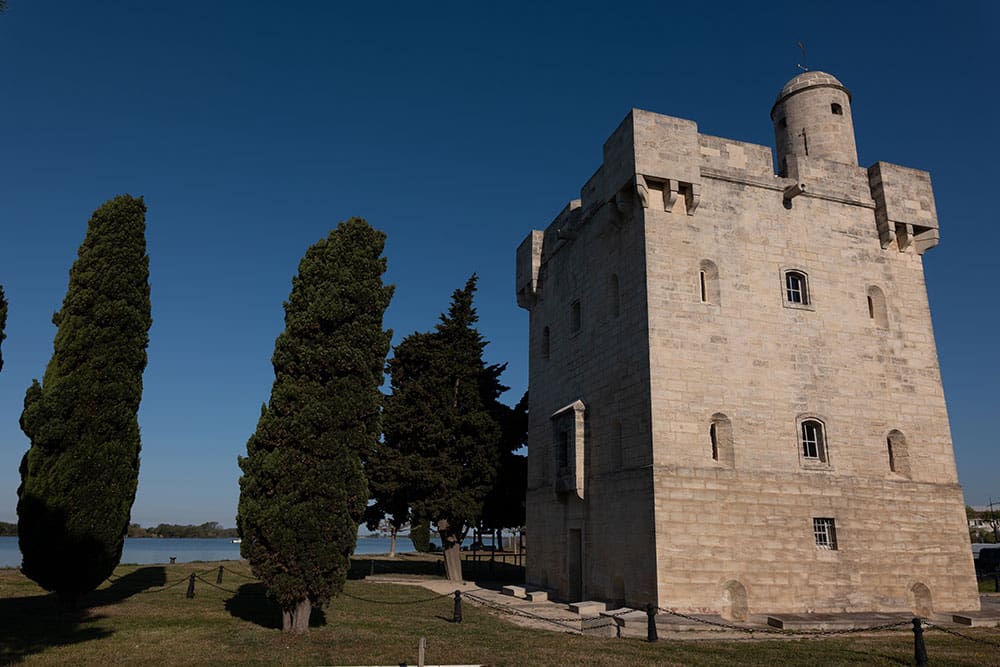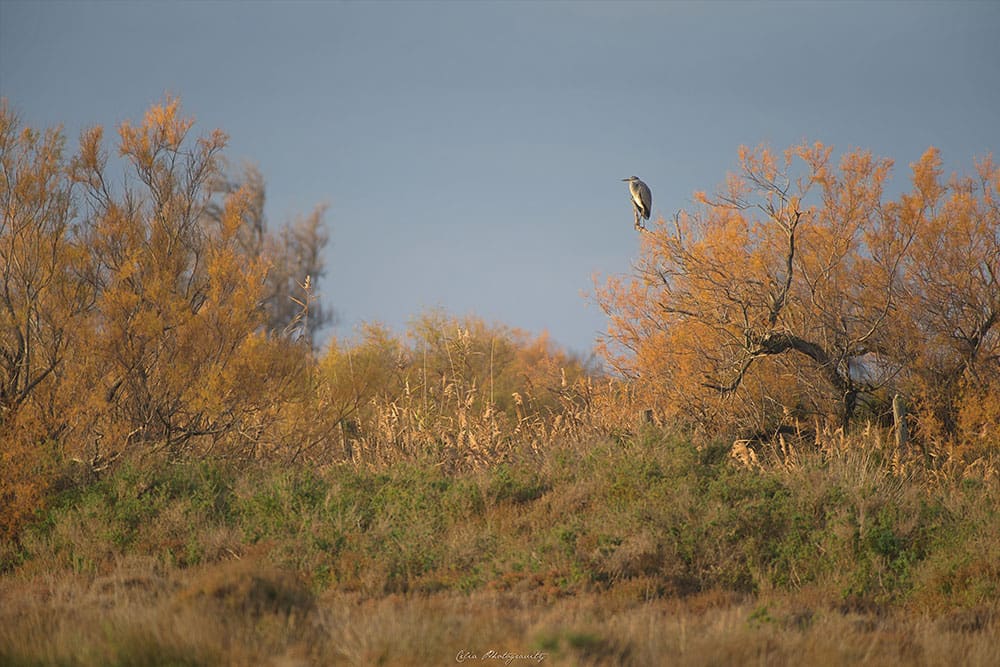
Discover the history and
the heritage of Camargue
Les Bois Flottés
A rich cultural heritage
The Camargue is a French natural region located on the edge of the Mediterranean, in the Bouches du Rhône department and formed by the Rhône’s Delta.
It is a destination imbued with a rich cultural heritage. It offers visitors the opportunity to discover its unique identity and traditions, while preserving its exceptional nature. This land presents a captivating herd culture, a great diversity of flora and fauna, authentic gastronomy, authentic festivities and breathtaking landscapes. In addition, the Camargue National Nature Reserve, a treasure trove of biodiversity, adds to this experience.
During your stay at Camping of “Les Bois Flottés”, you will have the opportunity to discover this unique combination of culture and nature which characterizes the Camargue.
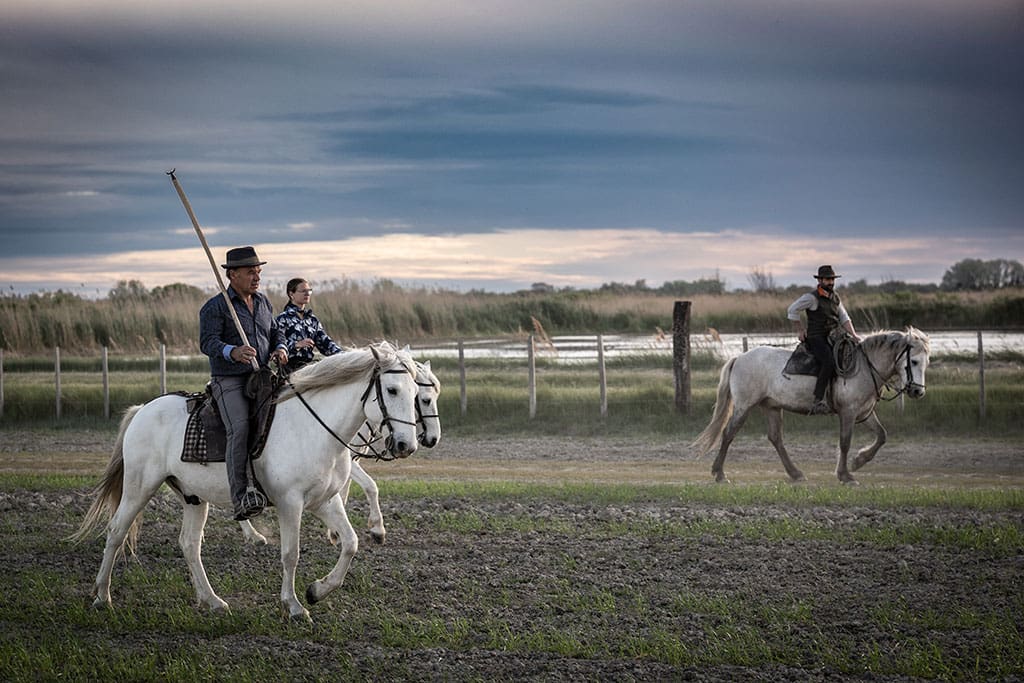

The Camargue Bull Race
Typical of the south, the Camargue bull race is a kind of bullfighting game without killing, which takes place in the arenas. The goal of the raseteur (the main human actor, all dressed in white) is to catch the attributes hanging on the bull’s head with his bare hand.
The Camargue Bull Race
Typical of the south, the Camargue bull race is a kind of bullfighting game without killing, which takes place in the arenas. The goal of the raseteur (the main human actor, all dressed in white) is to catch the attributes hanging on the bull’s head with his bare hand.
There are three of them and must be caught in the following order: the cocarde (red ribbon attached between the horns), the tassels (white wool pompom attached to the base of each horn), then the strings that surround the base horns. Razors use a 4-pronged hook, sometimes attached to the wrist. Once caught, the bull pursues the raseteur in the arena, not hesitating to rush into the barriers, or even try to jump them, making the crowd shudder. The race is done without killing, there is no question of injuring the animal. The Camargue bull races celebrate the courage of the bulls and the agility of the raseteurs. The Camargue bull also called “cocardier” is in fact smarter, more nervous and faster than its Spanish cousin, the fighting bull. The cocardier gets into the game and progresses over the course of the races. It therefore becomes more difficult to shave. Some even become real local stars. When they die, tradition dictates that he is buried upright, with his head turned towards the sea.
Abrivado is a very ancient practice which consisted of leading bulls from pastures to the arenas where the animals had to participate in races. An escort of horsemen accompanied the bulls (called biou in Provençal) to ensure their safety. Over time, the herdsmen got into the habit of crossing the village streets at high speed to prevent the young villagers from disturbing the convoy. In fact, the latter played with the bulls, which frequently escaped from the herd. Nowadays, the Abrivados are organized for festivals and participate in the folklore of the village.
The Bandido is the reverse journey, the return to the float and it marks the end of the show.
Encierro is a word of Spanish origin that translates to “enclose”. By this we mean the confinement of the bulls in the corrals (courtyards generally adjoining the arenas), in which they will be kept until the day of the bullfight. In the south, the encierro is a release of bulls on a closed course inside the village, in a street closed at both ends by carts and barriers, or on a public square whose access is closed from the same way.
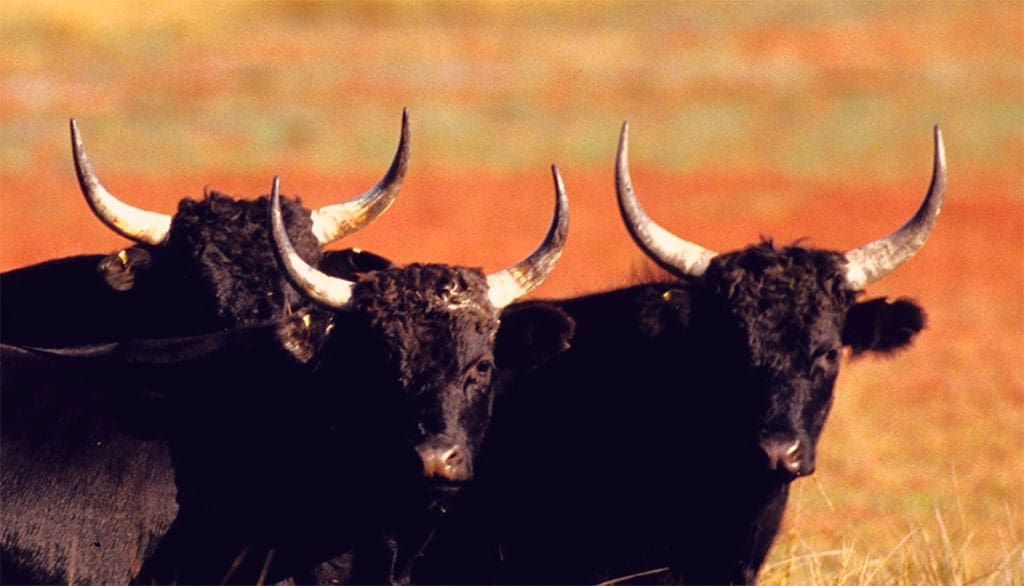

Bulls in Camargue
There are two breeds of bulls present in the Camargue. The raço di biou (Occitan name) has been present in the Camargue since ancient times. They live in herds (herds) of 150 to 300 heads on land unsuitable for cultivation and feed mainly on reeds and samphire.
Bulls in Camargue
There are two breeds of bulls present in the Camargue. The raço di biou (Occitan name) has been present in the Camargue since ancient times. They live in herds (herds) of 150 to 300 heads on land unsuitable for cultivation and feed mainly on reeds and samphire.
Its fur is dark brown and its horns point vertically towards the sky, forming a lyre, which is its main characteristic. The leader of the herd, the “simbeù” is a castrated bull carrying the “redoun”, a bell whose sound guides the herd. They are raised in particular to provide the bulls which will be used for games in the arenas and also for the consumption of their meat. This animal is small and light compared to other breeds of bulls, which gives it a predominant aptitude for running. The Camargue bull is the only breed considered in Europe to still be wild. There are 20,000 heads following the 2011 census.
The Brave or fighting breed originates from Spain and was introduced into the Camargue in 1869. Less numerous (around 6,000 heads) these bulls are raised in herds called ganaderia in the east of the delta and are exclusively intended for bullfighting with killing. Its horns are counter-directed towards the front unlike the Camargue breed.
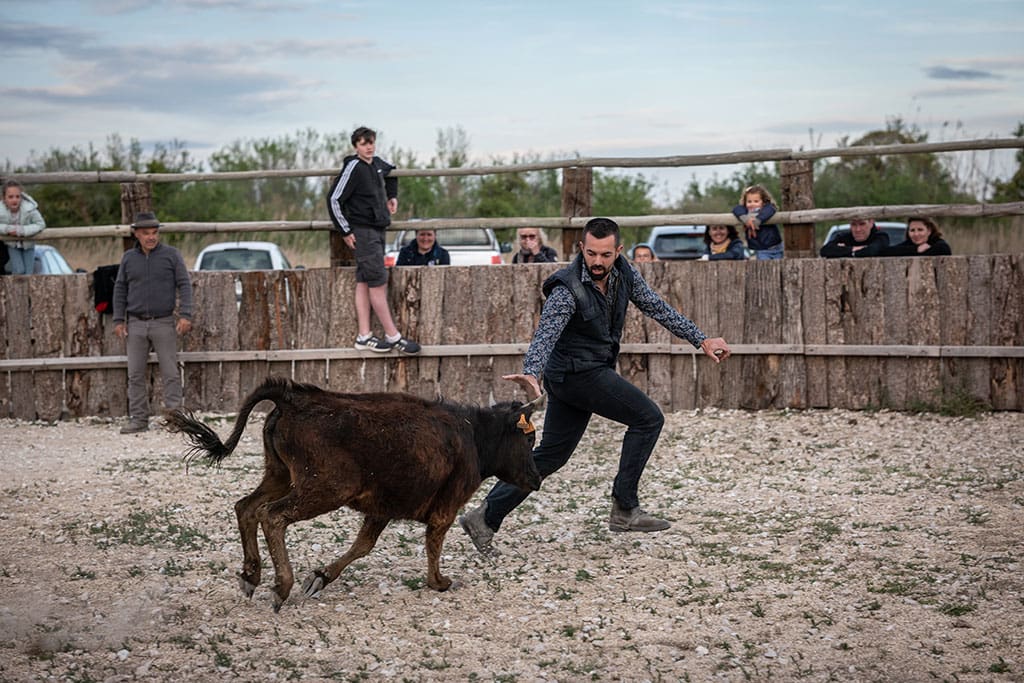

Breeding of Camargue bulls
Camarguese bulls are bred freely. From April to November they feed themselves in the humid part of the delta in the south and return for the winter to the non-flooding peripheral areas. Like foals, young calves aged one year are branded with a hot iron, this is called ferrade.
Breeding of Camargue bulls
Camarguese bulls are bred freely. From April to November they feed themselves in the humid part of the delta in the south and return for the winter to the non-flooding peripheral areas. Like foals, young calves aged one year are branded with a hot iron, this is called ferrade. It allows the breeder to identify his own animals and to ensure the selection and monitoring of families, the Camargue herd being subject to strict control. It is also the occasion for a big celebration with the herdsmen.
Throughout its life, the bull will have little contact with man, only for ferrade, when the herds are brought together for sale and when the herdsman ensures the good health of his herd. Sorting the livestock will allow the herdsmen to test the animals which will be used in the traditional Camargue race, to treat them or to take them to the slaughterhouse. Sorting livestock is delicate and requires the herders to have perfect mastery of horse riding in order to remove the animal smoothly and
without injuring it. The bulls unfit for play in the arenas are intended for the consumption of their meat, which is dark red in color and lean, similar to game. Since 1996, bull meat has benefited from an Appellation d’Origine Contrôlée label. It is frequently used in traditional Camargue recipes such as gardiane, a type of stew.
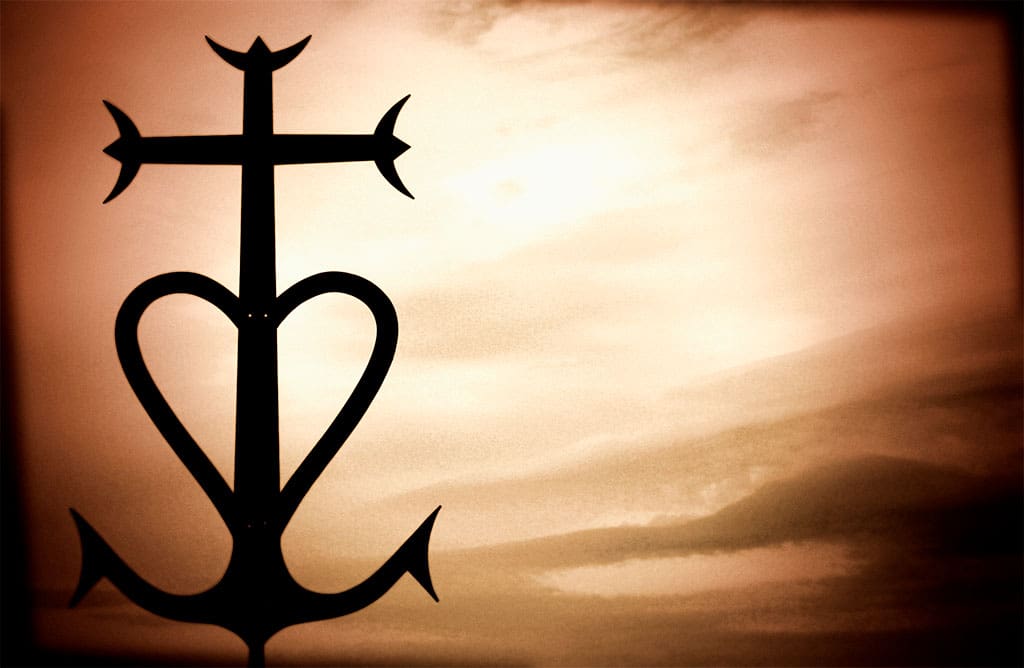

The Camargue Cross
Created in 1924, the Camargue cross represents the Camargue spirit and its values. It alone represents the “Camargue Nation” because it symbolically associates the herdsmen, the fishermen and the Saintes Maries.
The Camargue Cross
Created in 1924, the Camargue cross represents the Camargue spirit and its values. It alone represents the “Camargue Nation” because it symbolically associates the herdsmen, the fishermen and the Saintes Maries. Created in 1924, the Camargue cross represents the Camargue spirit and its values. It alone represents the “Camargue Nation” because it symbolically associates the herdsmen, the fishermen and the Saintes Maries.
It is made up of three elements representing :
- Faith through the cross tridents of the guardians
- Hope by the anchor of the fishermen
- Charity through the hearts of the Holy Marys
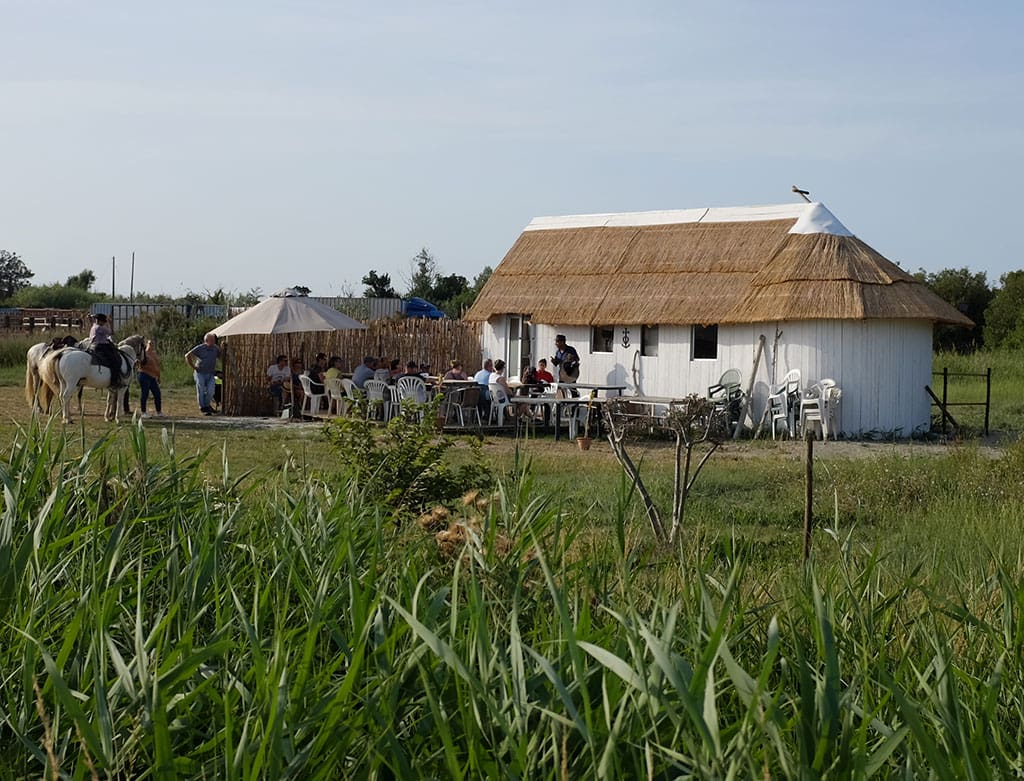

The Guardian’s Cabin
A typical habitat of the Camargue in the 19th century, it served as housing for agricultural workers. They are similar to the reed huts found throughout the Languedoc and Roussillon coastlines.
The Guardian’s Cabin
A typical habitat of the Camargue in the 19th century, it served as housing for agricultural workers. They are similar to the reed huts found throughout the Languedoc and Roussillon coastlines. The Camargue cabins are made from locally available plant materials such as reed (sagne), very useful for its low cost, the noble materials being reserved for the construction of the farmhouses, the residence of the breeders. The cabins also served as accommodation for fishermen, shepherds, basket weavers and salt workers.
The length of the cabin is oriented towards the north so that it does not offer resistance to the wind and in particular the mistral. It has no foundation and its floor is dirt. The low walls are whitewashed and reveal a few narrow openings, which help protect the inhabitants from the sun. The steep slope of its two-sloped reed roof allows good rainwater drainage. It does not have chimneys but a central fireplace without a hood. A simple hole in the roof allows the smoke to escape.
There are no longer any old cabins visible but only modernized replicas which serve as lodges, guest rooms or restaurants for tourists and vacationers. Its architecture is still appreciated for the pleasure of seeing the tradition continue and for its adaptation to the harsh climatic conditions of the Camargue.






